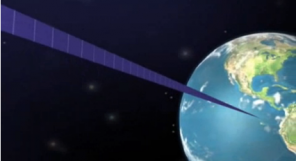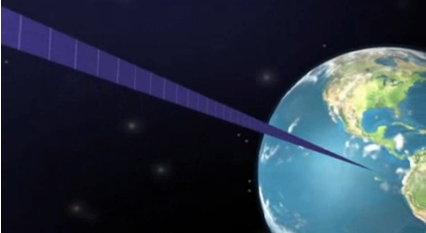
This August 11th to 14th, Microsoft played host to the 2011 Space Elevator Conference. The theme for this year was “Developing Stronger, Lighter Tethers–30 MegaYuris or Bust!” (To refresh your memory, one Mega-Yuri = one GPa-cc/g.) On that front, it was “Bust.”
The idea is that by building a 100,000-kilometer carbon nanotube ribbon, with one end on Earth and the other in orbit, we could more easily ship supplies off-world. Depending on the tensile strength of the elevator “cable” in question, it might weigh anywhere between 900 and 50 tons.
Annalee Newitz attended the conference, and summed up the sobering reality:
Every year at the Space Elevator Conference, people bring carbon nanotube fibers and compete to see which can withstand the greatest strain before breaking. Winners stand to gain over a million dollars from NASA in its “strong tether” competition; sadly, this year, nobody had fibers that were strong enough to place…
The upshot is that no one has discovered how to turn nanotube fibers into a non-nano, workable material. Since we need 100,000 kilometers of it, this is a sticking point.
Meanwhile, the power side proceeds by leaps and bounds. Back in 2009, we met up with Kent’s LaserMotive after they won NASA’s power-beaming competition. Even crippled, their climber set a world speed record. Last year, they went on to power a small quadcopter’s flight for over twelve hours, using their combination of high-efficiency photovoltaic cells and near-infrared lasers to transmit energy. (“Invisible extension cords” is how they make “high-powered laser” sound friendlier.)
The AscTec Pelican looks like a toy copter, but it’s not. It’s an Unmanned Aerial Vehicle (UAV), and can carry 500 grams of payload (a camera, for instance). Normally it would stay in flight for 20 minutes.
LaserMotive is now one of ten winners of the 2011 CTSI Defense Energy Challenge (that’s the Department of Defense), out of 220 entrants. Keeping unmanned drones aloft in challenging territory is something the DoD is keen on. (“Do you know how many people have died delivering gasoline?” is how Tom Nugent, LaserMotive president and co-founder, framed a key benefit of laser-beamed power for MSNBC.)
NASA also remains impressed, inviting LaserMotive to their NASA Day on the Hill back in June, even though LaserMotive isn’t a NASA contractor.
It’s hard not to feel like we’re on the cusp of a power revolution, when considering what LaserMotive has accomplished already. When NASA writes: “Using solar power limits the places on Mars that landed rover missions can explore,” you think, But not for long.
Currently, power beaming is limited to about one kilometer, but it’s early days on the frontier. LaserMotive’s Dr. Jordin Kare argues that just as space-based telescopes opened our eyes to what’s really out there, space-based solar collectors that lase energy down would blow our minds on the true potential of solar power, whether those satellites are powering microwaves here or rovers on Mars.
We here at The SunBreak are big boosters of solar power, but we are not crazy. Solar power, for instance, doesn’t work as well at night. (Or, as mentioned, during winter on Mars.) Solar power is affected by the atmosphere–clouds cut down on solar transmission, as many Seattleites have the pallor to prove. Geosynchronous, solar-collector satellites would keep the sun turned on 24/7, then deliver the results wherever needed.
Back here on Earth, present-day, the usefulness of one-kilometer, line-of-sight extension cords is apparent. “Electrical power lines are expensive to install ($20,000 or more per mile for low power residential lines, and $250,000 or more per mile for high-voltage transmission lines),” points out LaserMotive, helpfully. It would be a particularly trenchant irony if wars over oil were the testing ground for a power transmission source that led us to fully harness solar energy.
